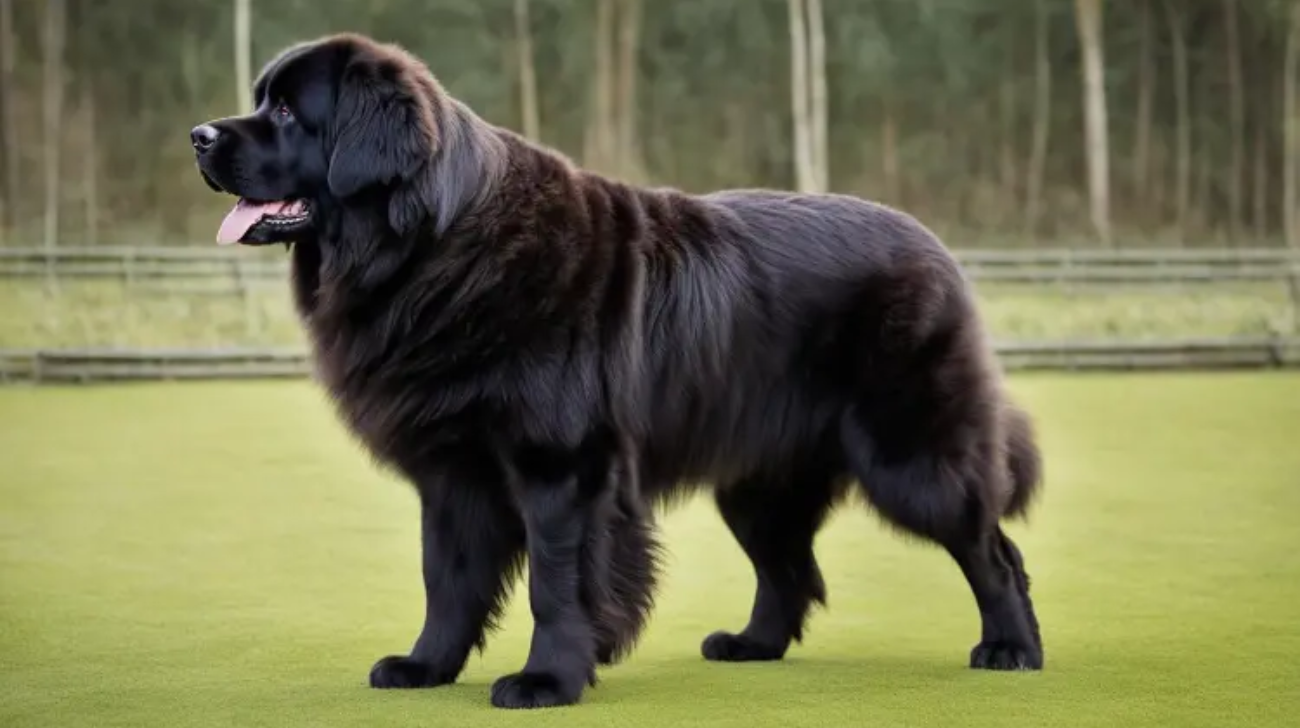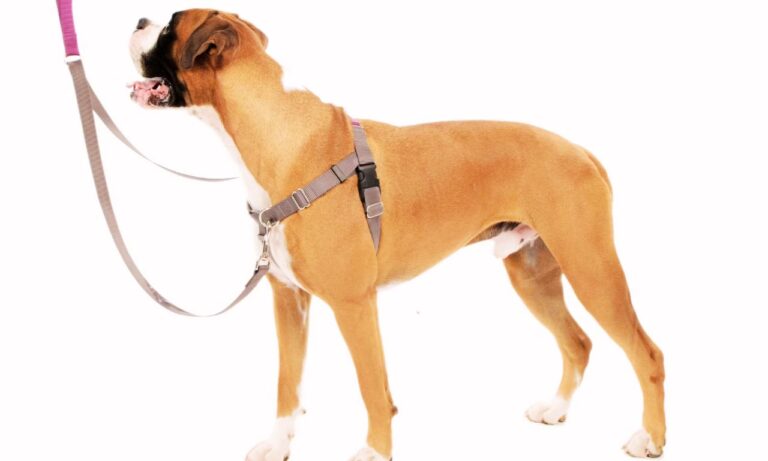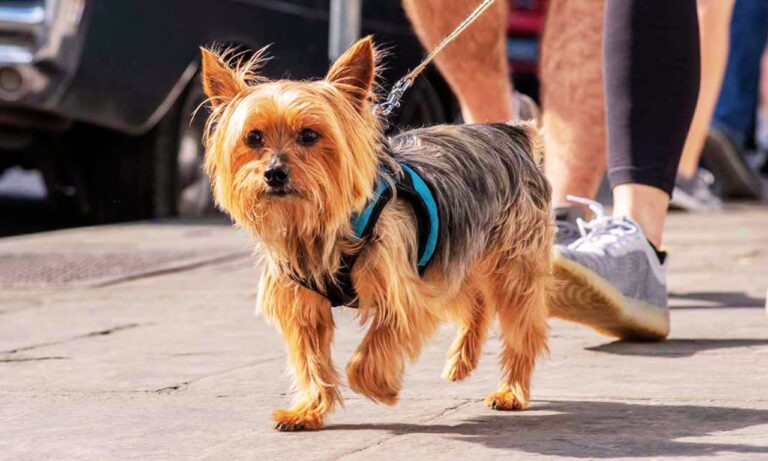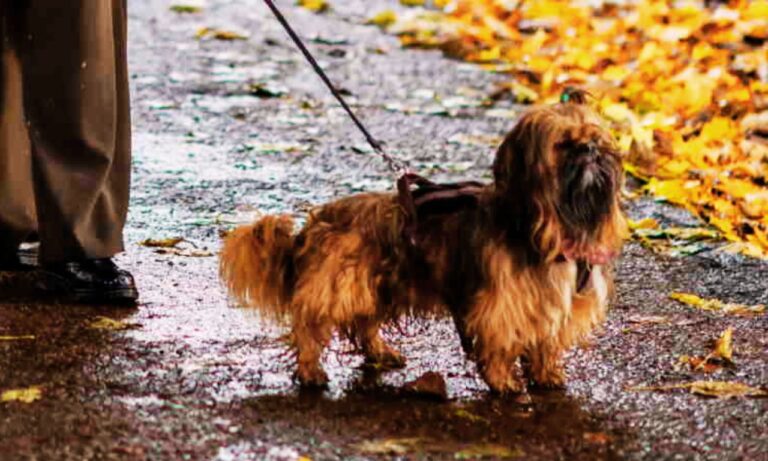Newfoundlands are majestic, gentle giants known for their strength, intelligence, and friendly nature. As a responsible dog owner, ensuring your Newfoundland wears a properly fitted collar is crucial for their safety, comfort, and overall well-being. So, how to ensure a safe collar fit for Newfoundland? Discover the ideal fit by learning what size collar for Newfoundland dog to ensure your pet’s comfort and safety.
A well-fitted collar not only provides identification but also plays a vital role in daily activities like walking, training, and socialization. I will explore the steps to ensure a safe collar fit for your Newfoundland, including measuring techniques, collar types, materials, and additional safety tips. To find the perfect fit, learn more about what size collar for a Bichon, ensuring your dog’s comfort and safety.
Blog Highlights
ToggleImportance of a Properly Fitted Collar
A collar is more than just an accessory for your Newfoundland; it serves several essential functions:
- Identification: Collars typically hold ID tags with your contact information, which is vital if your dog gets lost.
- Control: During walks, a collar is the primary point of attachment for the leash, allowing you to guide and manage your dog’s movements.
- Training: Collars can be used as tools for training, helping to reinforce commands and behaviors.
- Safety: A properly fitted collar reduces the risk of choking, neck injuries, and discomfort.
How to Ensure a Safe Collar Fit for Newfoundland | 8 Steps
Given these functions, it is paramount to ensure that your Newfoundland’s collar fits correctly to maximize these benefits without causing harm. The recommended size collar for an English Cocker Spaniel usually ranges from 12 to 18 inches, providing a snug and comfortable fit for your dog.
Here’s how to ensure a safe collar fit for Newfoundland:
Step 1: Measuring Your Newfoundland’s Neck
Accurate measurement is the first step in selecting the right collar size. Here’s how to do it:
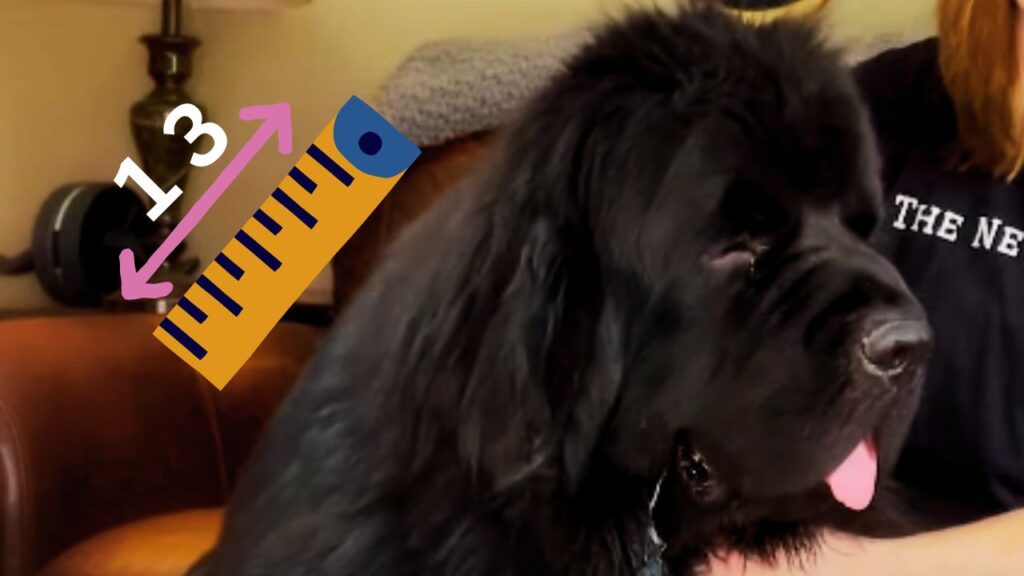
Tools Needed:
- Flexible Measuring Tape: A cloth or soft plastic measuring tape is ideal.
- String and Ruler: Alternatively, a piece of string can be used and then measured against a ruler.
Measuring Steps:
- Position the Collar: Place the measuring tape around the base of your Newfoundland’s neck, where the collar will naturally sit. This is typically just below the ears and above the shoulders.
- Snug Fit: Ensure the tape is snug but not tight. You should be able to comfortably fit two fingers between the tape and your dog’s neck. This ensures that the collar is secure yet comfortable.
- Record the Measurement: Note the measurement in inches or centimeters. For Newfoundlands, neck sizes generally range from 24 to 36 inches, depending on the dog’s size and age.
- Adjust for Puppies: If your Newfoundland is a puppy, consider adding 2 inches to account for growth as they mature.
Example:
An adult Newfoundland may have a neck measurement of approximately 30 inches. By allowing room for two fingers, a collar size of 30-32 inches would be appropriate.
Step 2: Selecting the Right Collar Type
Choosing the appropriate collar type for your Newfoundland is crucial. Different collars offer various levels of control, comfort, and functionality.
a. Flat Collars
Flat collars are the most common type of dog collar. They are typically made from nylon, leather, or fabric and come with a buckle or quick-release clasp. The ideal size collar for English Springer Spaniel typically ranges from 14 to 20 inches, depending on the dog’s age and neck size, ensuring a comfortable and secure fit.
Benefits:
- Versatility: Suitable for everyday use, training, and attaching ID tags.
- Comfort: Available in padded versions to prevent chafing.
- Variety: Comes in numerous colors and patterns to suit your dog’s personality.
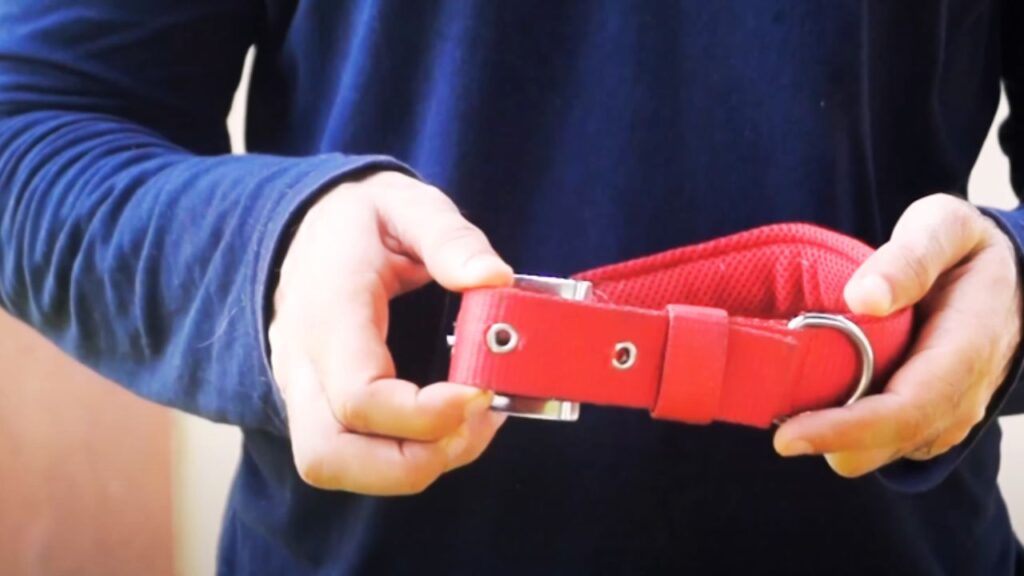
Best For: Daily wear and general walking purposes.
b. Martingale Collars
Martingale collars are designed to provide more control and prevent dogs from slipping out of their collars. They have a limited-slip feature that tightens slightly when the dog pulls, offering more control without choking.
Benefits:
- Control: Helps manage larger dogs without causing harm.
- Safety: Prevents the collar from becoming too tight.
- Training: Effective for training purposes, particularly for strong and energetic breeds like Newfoundlands.
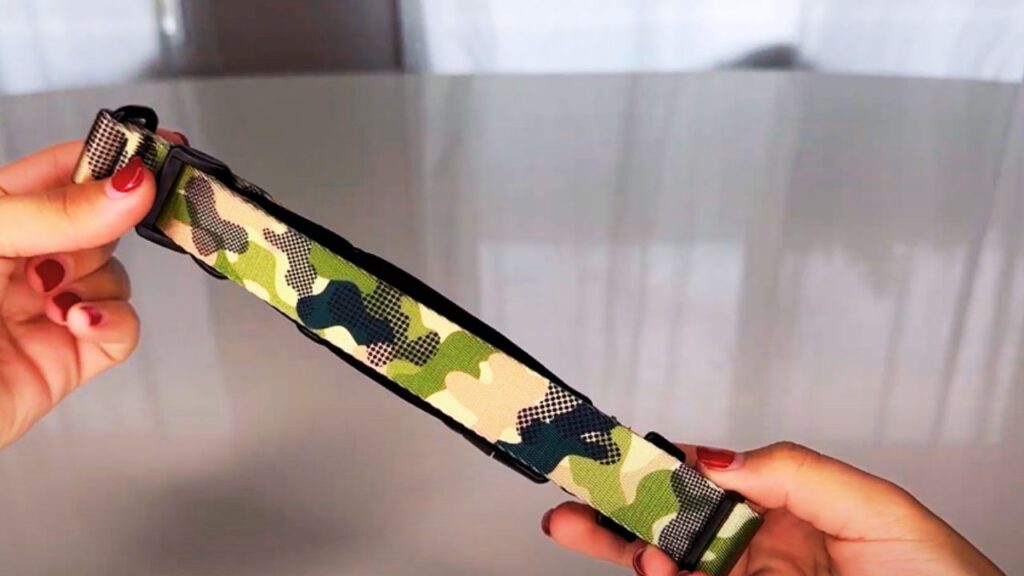
Best For: Training sessions and walking in busy or high-traffic areas.
c. Harnesses
Harnesses are an alternative to collars that distribute pressure across the dog’s chest and shoulders, rather than the neck.
Benefits:
- Neck Protection: Reduces strain on the neck, which is beneficial for strong, active dogs.
- Control: Provides better control during walks and outdoor activities.
- Versatility: Ideal for dogs with respiratory issues or those prone to pulling.
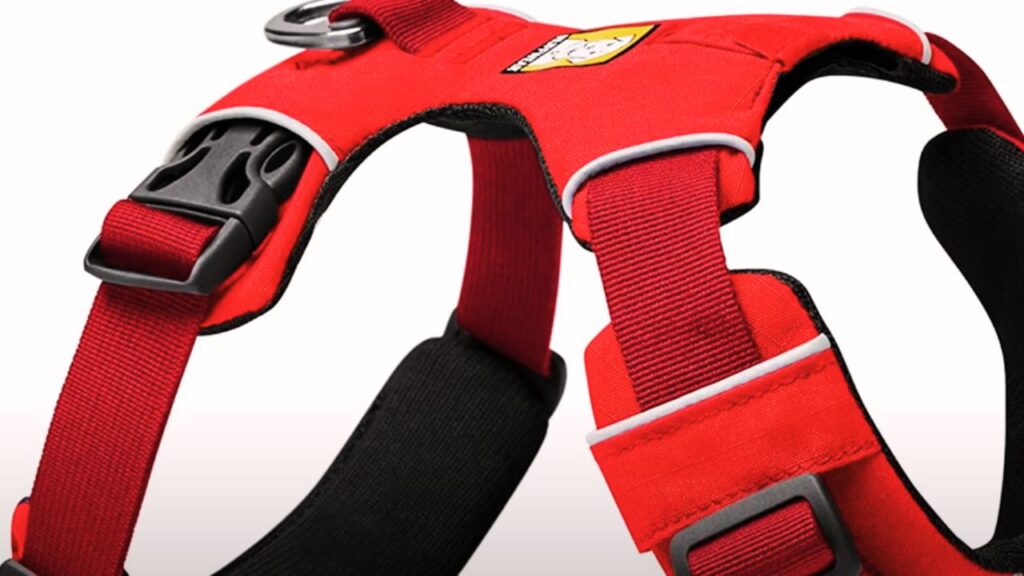
Best For: Hiking, running, and outdoor adventures where more control is needed.
d. Head Collars
Head collars, such as the Gentle Leader, fit around the dog’s muzzle and neck, providing control by guiding the dog’s head.
Benefits:
- Behavior Control: Helps manage pulling and directional training without causing discomfort.
- Safety: Prevents choking and reduces the risk of neck injuries.
- Ease of Use: Easy to put on and take off, making them practical for training purposes.
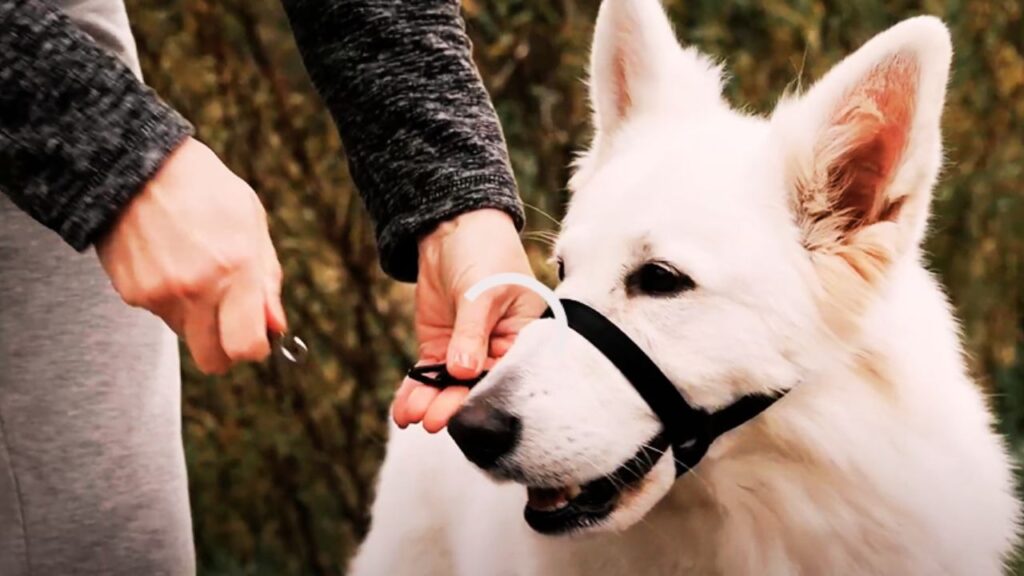
Best For: Training and behavior correction.
Step 3: Choosing the Right Material
The material of the collar impacts both its durability and comfort. Here are the most common collar materials suitable for Newfoundlands:
a. Nylon
Nylon collars are lightweight, durable, and come in a wide range of colors and patterns.
Benefits:
- Durability: Resistant to wear and tear, making them ideal for active dogs.
- Easy to Clean: Nylon collars can be washed easily, which is beneficial for large dogs that might get dirty during activities.
- Affordability: Generally more affordable than leather or specialized materials.
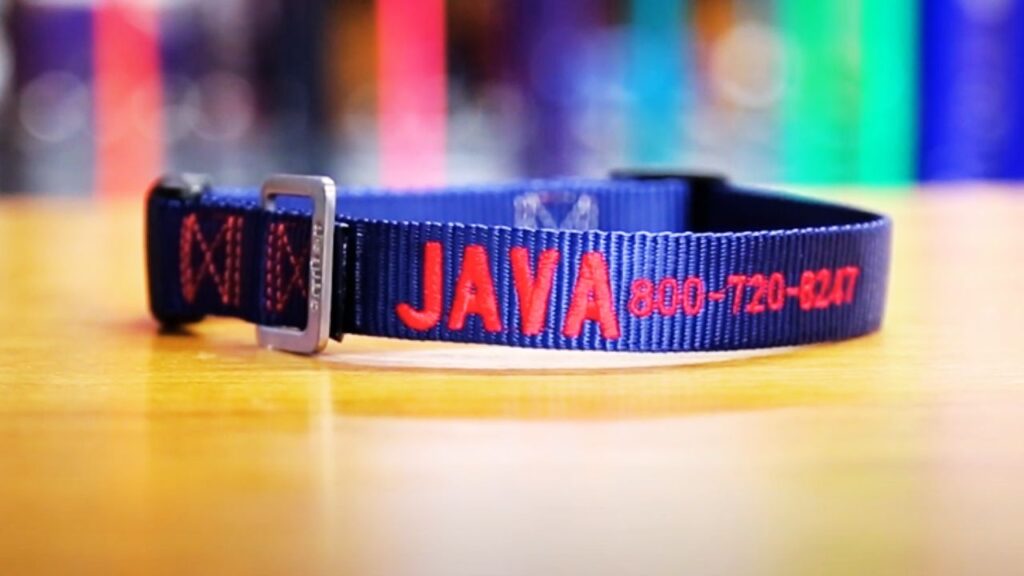
Pros: Lightweight, affordable, easy to clean.
Cons: May wear out faster with rough use.
b. Leather
Leather collars are known for their durability and classic appearance. They are soft and become more comfortable over time, molding to the shape of your dog’s neck. Find out what style dog collar is best for hounds to ensure comfort and safety for your furry friend.
Benefits:
- Comfort: Soft and comfortable against the skin, reducing the risk of irritation.
- Durability: Long-lasting and resistant to damage.
- Aesthetics: Elegant and stylish, suitable for formal occasions or casual walks.
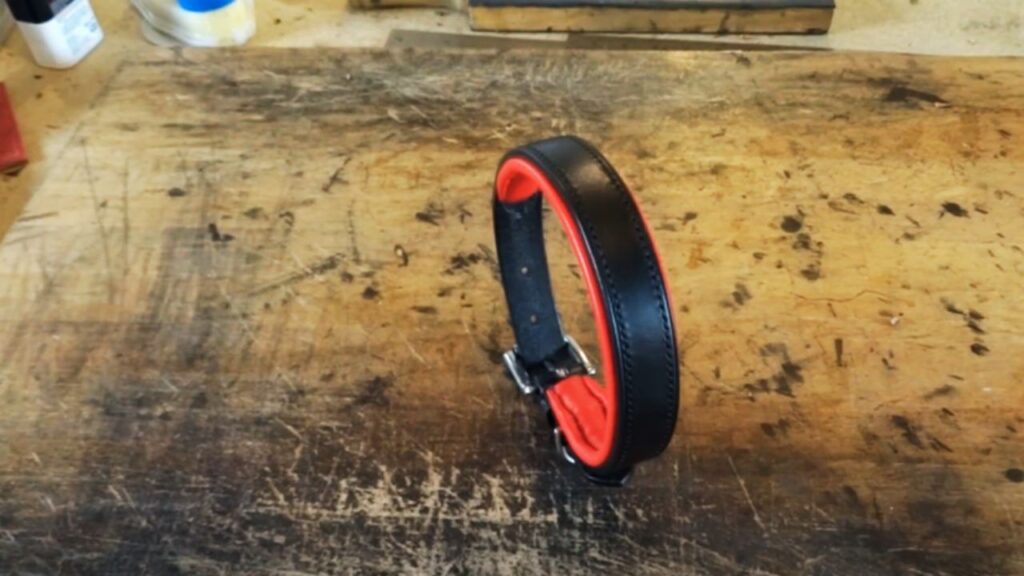
Pros: Durable, comfortable, and hypoallergenic.
Cons: Higher cost and requires more maintenance.
c. Biothane
Biothane is a synthetic material that combines the durability of nylon with the flexibility and appearance of leather. It is water-resistant and easy to clean, making it an excellent choice for Newfoundlands who enjoy outdoor activities.
Benefits:
- Water-Resistant: Ideal for dogs that enjoy water activities.
- Easy to Clean: Resistant to stains and odors, making maintenance easy.
- Durable: Highly resistant to chewing and scratching.
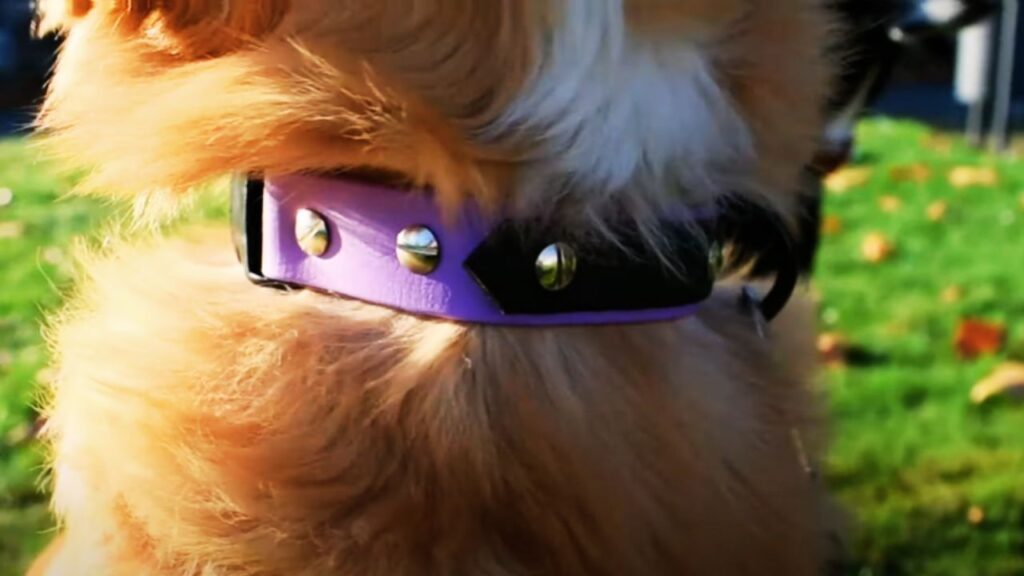
Pros: Water-resistant, durable, easy to clean.
Cons: Limited color options compared to nylon.
d. Fabric
Fabric collars are soft, lightweight, and often feature decorative patterns.
Benefits:
- Comfort: Gentle on the skin, preventing chafing and irritation.
- Variety: Available in numerous designs and colors to match your dog’s personality.
- Breathability: Suitable for dogs with sensitive skin.
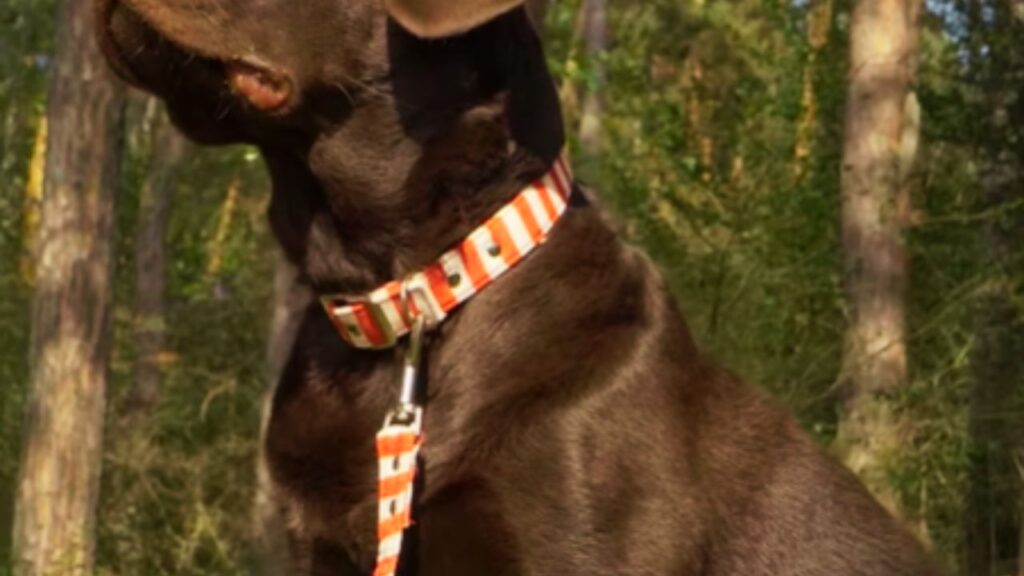
Pros: Soft and comfortable, often available in a variety of designs.
Cons: Less durable and may wear out quickly.
Step 4: Ensuring the Proper Fit
A properly fitted collar is essential for your Newfoundland’s safety and comfort. Here’s how to ensure the fit is correct:
a. The Two-Finger Rule
Always ensure that you can comfortably fit two fingers between the collar and your dog’s neck. This rule helps prevent the collar from being too tight, which can cause choking or discomfort. Discover why Afghan Hound collars are wide by exploring the unique characteristics of this breed and how wide collars enhance their comfort and style.
b. Regularly Check the Fit
Your Newfoundland’s neck size may change due to growth, weight gain or loss, and muscle development. Regularly check the fit of the collar to ensure it remains comfortable and secure. Adjust the collar size as needed to accommodate these changes.
c. Monitor for Signs of Discomfort
Watch for signs that the collar may be too tight or too loose, such as:
- Redness or irritation around the neck
- Excessive scratching or licking
- Difficulty breathing or swallowing
- The collar slipping off or being too easy to remove
If you notice any of these signs, remeasure your dog’s neck and adjust the collar accordingly.
d. Proper Collar Position
Ensure the collar sits at the base of your Newfoundland’s neck, just below the ears and above the shoulders. This positioning ensures maximum control and comfort.
Step 5: Additional Safety Features
Incorporating additional safety features can enhance the functionality and safety of your Newfoundland’s collar.
a. Reflective Strips
Reflective collars increase visibility during nighttime walks or in low-light conditions, ensuring that your dog is visible to drivers and pedestrians.
b. Quick-Release Buckles
Quick-release buckles allow you to remove the collar quickly in case of an emergency, preventing potential injuries if the collar gets caught on something.
c. Breakaway Collars
Breakaway collars are designed to release under pressure, reducing the risk of choking if the collar becomes snagged on an object.
d. ID Tags and Microchips
Always attach ID tags with your contact information to the collar. Additionally, consider microchipping your Newfoundland for added security and ease of identification.
Step 6: Choosing the Right Collar Width and Thickness
The width and thickness of the collar can impact your Newfoundland’s comfort and the level of control you have during walks. Learn about the size collar for an American Eskimo to ensure a perfect fit and comfort for your dog.
a. Collar Width
For Newfoundlands, a wider collar is generally better as it distributes pressure more evenly across the neck. A width of 1.5 to 2 inches is ideal for most Newfoundlands, providing both comfort and durability.
b. Collar Thickness
Thicker collars tend to be more durable and offer better control, which is important for large, strong breeds like Newfoundlands. However, ensure the thickness doesn’t cause discomfort or restrict movement.
Step 7: Training Your Newfoundland with the Collar
Once you have the right collar, it’s important to train your Newfoundland to wear it properly.
a. Introduce the Collar Gradually
Start by introducing the collar gradually to your dog. Allow them to sniff and investigate the collar before placing it on their neck.
b. Positive Reinforcement
Use treats and praise to reward your Newfoundland when they wear the collar without resistance. This helps them associate the collar with positive experiences.
c. Short Training Sessions
Begin with short training sessions, gradually increasing the duration as your dog becomes more comfortable wearing the collar. Discover if the American Eskimo is a guard dog and learn about its suitability for protecting your home.
d. Leash Training
Once your Newfoundland is comfortable with the collar, introduce the leash and practice basic walking commands. This reinforces the collar’s role in guiding and controlling your dog during walks.
Step 8: Maintaining and Cleaning the Collar
Proper maintenance ensures that the collar remains functional and comfortable for your dog.
a. Regular Cleaning
Depending on the material, clean the collar regularly to remove dirt, bacteria, and odors. Nylon and fabric collars can usually be machine washed, while leather collars may require wiping with a damp cloth and applying a leather conditioner.
b. Inspect for Wear and Tear
Regularly inspect the collar for signs of wear and tear, such as frayed edges, loose buckles, or broken clasps. Replace the collar immediately if it shows any signs of damage to prevent accidents.
c. Storage
Store the collar in a dry, clean place when not in use to prevent mold, mildew, or damage from environmental factors.
Wrapping Up:
Ensuring a safe collar fit for your Newfoundland is an essential aspect of responsible dog ownership. By accurately measuring your dog’s neck, selecting the appropriate collar type and material, and regularly checking the fit, you can provide your Newfoundland with a collar that is both comfortable and functional. Remember to incorporate additional safety features, maintain the collar’s condition, and use positive reinforcement during training to create a positive association with the collar. For a comprehensive guide on what kind of harness is best for a Pomeranian, including comfort and safety tips, check out this article.
A properly fitted collar not only enhances your Newfoundland’s daily life but also contributes to their safety and well-being. Whether you choose a flat collar, martingale, or harness, always prioritize the fit and material to ensure maximum comfort and control during daily walks and outdoor activities. Hope so, now you know, how to ensure a safe collar fit for Newfoundland.

